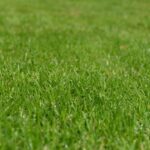
Gold medal-winning garden designer Paul Hervey-Brookes will create a conceptual installation at this year’s RHS Chatsworth Flower Show, using elements of a village that once stood in the grounds of Chatsworth House to question our relationship with time and the natural world.
Influenced by the eighteenth century village that existed before being moved to make way for Capability Brown’s celebrated landscape, the Brewin Dolphin Installation will prompt visitors to think about landscape, our interaction with it and what elements of the past we value. The Installation will draw on historical forms to create a pavilion over four metres high that will act as a centre point to the space.
Featuring plants that would have grown at the time of the village, the installation will give visitors the chance to experience the horticulture of the past and see it in direct contrast to the current landscape. The timber pavilion will use the structural shapes of the lost houses, whilst elsewhere, immersed amongst dense areas of colourful planting, a collection of cylindrical concrete sculptures, some tall, some small, will represent people who have come and gone across the landscape over time.
Paul said: “I first heard about the village on a tour of Chatsworth with the Duke of Devonshire. He took me up on to the roof of the house and showed me how the footprint of the houses could still be seen in dry weather. The idea that an entire village, once tangible and solid, should be removed, fascinated me and designing the Brewin Dolphin Installation has given me a unique opportunity to explore this alongside the nature of time and our perception of it. We think of time as being linear because of the way we live but it’s not necessarily like that. The Brewin Dolphin installation will fuse different timelines together, combining the existing landscape with elements of the past, but importantly prompting questions around that which we choose to keep and that which is forsaken to progress”.
Planting will combine native plants that would have been common at the time, with decorative varieties that would have been introduced in later years. Herb expert Jekka McVicar will grow eight specialist varieties especially for the garden, all of which would have been used both as medicine and food by those living there. Included amongst these, Wild Angelica, used as a vegetable until the 20th century and taken as a medicine to treat ailments such as scurvy; Sanguisorba, better known as Salad Burnet, one of the staple herbs to travel across the Atlantic with the Pilgrim Fathers; and Tanacetum, sometimes known as Bachelor’s Button or Feverfew, which is still used to treat migraines today. Other key plants include Verbascum, Buxus and Reseda that will feature alongside three different trees, including two Copper Beach trees reflecting the trees in the existing parkland.
Rupert Tyler, National Director at Brewin Dolphin said: “Paul Hervey-Brookes has a unique talent for creating beautiful and captivating gardens. The concept behind the Brewin Dolphin Installation is fascinating and it’s particularly exciting to be creating something that has such a direct link to the Chatsworth Estate itself. Interestingly, the village dates back to the same time that Brewin Dolphin was founded, in the 1700s, and the idea of taking values from the past and preserving them for the future perfectly reflects our own principles. I’m sure our clients and visitors to the show will be fascinated by the story and will enjoy seeing it brought to life in such a spectacular display.”
The Brewin Dolphin Garden at RHS Chatsworth marks a seven-year relationship with the RHS including five successful years at RHS Chelsea and its inaugural garden at RHS Chatsworth in 2017.
www.gardening.brewin.co.uk

